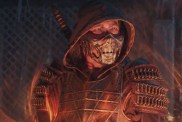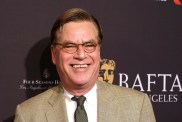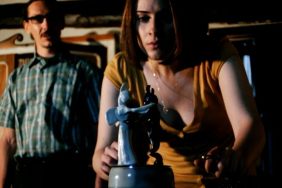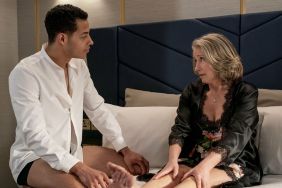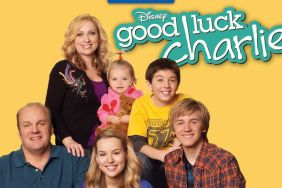David Strathairn as Edward R. Murrow
George Clooney as Fred Friendly
Robert Downey Jr. as Joe Wershba
Patricia Clarkson as Shirley Wershba
Jeff Daniels as Sid Mickelson
Frank Langella as William Paley
Grant Heslov as Don Hewitt
Ray Wise as Don Hollenbeck
Rose Abdoo as Millie Lerner
Alex Borstein as Natalie
Robert John Burke as Charlie Mack
David Christian as Attorney
Reed Diamond as John Aaron
Tate Donovan as Jesse Zousmer
Joseph Dowd as Reporter
Simon Helberg as CBS Page
Thomas McCarthy as Palmer Williams
Glenn Morshower as Colonel Anderson
Katharine Phillips Moser as Jesse’s wife
Bruna Raynaud as Franck Stanton’s Wife
Matt Ross as Eddie Scott
Senator Joe McCarthy as Himself
Summary:
Clooney’s second film is an impressive time capsule depicting a period of American journalistic history, driven by a memorable performance by David Strathairn as newsman Edward R. Murrow.
Story:
In 1958, during television’s infancy, Edward R. Murrow (David Strathairn) took on the government, questioning the witch hunt tactics of Senator Joseph McCarthy at outing communist sympathizers on his show “See It Now.” Their on-air conflict captured the attention of the nation and changed the relationship between politics and television news for years.
Analysis:
Television news may be the most interesting part of the modern media, because most of us only see a face and a voice reading from a teleprompter. We rarely get to see all of the stuff going on behind the scenes. No one knows this better than actor George Clooney, who spent much of his youth visiting his anchorman father on the news set. Because of this, his second film as director is a far more personal project, but also one that is incredibly relevant to the current sociopolitical situation in our country in terms of how politics comes into play when reporting the news.
In “Good Night, And Good Luck.,” we see some of the precedents that set the stage for modern television journalism. Edward R. Murrow’s show “See It Now” was an early precursor to “Crossfire” and “The O’Reilly Factor”, acting as a forum for Murrow to inform the nation about current social and political issues. When he started going after Senator McCarthy’s anti-communist tactics, the sponsors began to get nervous, even as the nation tuned into his broadcasts with their full attention.
Clooney’s film is about as close as one could get to a documentary, blending rarely-seen newsreel footage of McCarthy and the senate hearings with recreations of what was going on behind the scenes in Murrow’s newsroom. The decision to make a black-and-white film adds to the illusion that you’re watching a movie from the era, but the excellent script by Clooney and Grant Heslov also sets the tone for the viewer to feel like a fly on the wall watching history unfold. It’s obvious that Clooney and Heslov spent a lot of time researching this movie, and we’re privy to everything from the brainstorming and planning sessions for the historic broadcasts to Murrow’s news team discussing the aftermath in a more social setting.
The relationship between Murrow and his producer Fred Friendly, played by Clooney himself, is especially interesting, as they work together to negotiate with the network to let them do their thing. Wisely, Clooney plays down his own role to let others take center stage, and clearly, that stage belongs to David Strathairn, reproducing Murrow’s drone-like delivery with a pitch perfect resonance right down to his classic sign-off phrase, used as the film’s title. Like Murrow, Strathairn keeps the viewer riveted to his every word with his pointed on-air monologues, which are even more amazing when Straitharn starts debating newsreel footage of McCarthy, taken directly from the original broadcasts. Another great example of how the past and present are blended seamlessly.
The rest of Clooney’s cast is pretty solid across the board: Frank Langella gives an equally memorable performance as CBS President William S. Paley, who spars with Friendly and Murrow about the show’s content, and Ray Wise is also good as Don Hollenbeck, a fellow reporter targeted by McCarthy as a communist sympathizer. Another concurrent subplot involves the secret marriage between two of Murrow’s news team, played by the film’s designated hitters Robert Downey Jr. and Patricia Clarkson. Although the film doesn’t spend very much time on their story, it’s nice to see a woman in the boys’ club environment that was the ’50s newsroom, and Clarkson carries herself with enough sass that she can keep up with the guys without missing a beat.
A cinematographer’s job is tough enough, but it must be an incredible challenge to film an entire movie that will be converted to black-and-white. Robert Elswit meets the challenge full-on, creating a gorgeous film that often resorts to rather unconventional camera techniques to make this dialogue-heavy film more visually interesting. Another nice touch is the use of jazz singer Diane Reeves as the film’s Greek chorus, whether she’s singing in the background at the club where the newsmen hang out or providing the soundtrack to the film’s poignant climax.
The overall film shows an amazing maturity in Clooney as a director from his first film “Confessions of a Dangerous Mind,” and you have to give him credit for taking such a daring risk and pulling it off so smoothly. In doing so, he’s created a film that acts as an overview for the changing politics of the time, while also making it deeply relevant to what is going on in the world today. Just replace the word “communist” with “terrorist” and suddenly, Murrow’s words take on new meaning.
The Bottom Line:
If you’re interested in politics or how it relates to the news, or vice versa, Clooney’s amazing labor of love should stir your interest in this fascinating period in journalistic history. One of the year’s best films, “Good Night, And Good Luck.” should strike a chord with every American.
Good Night, And Good Luck. opens in New York and Los Angeles on Friday.

